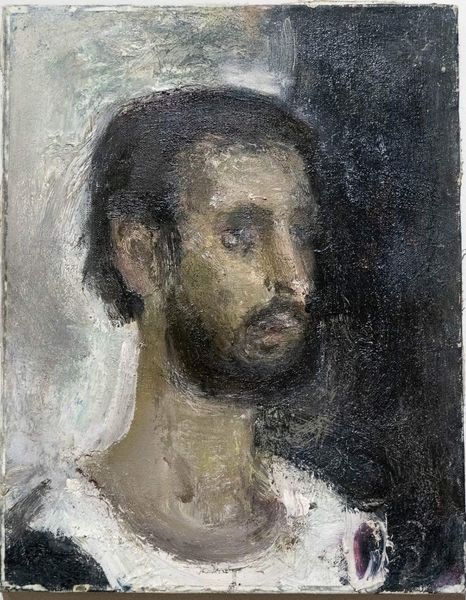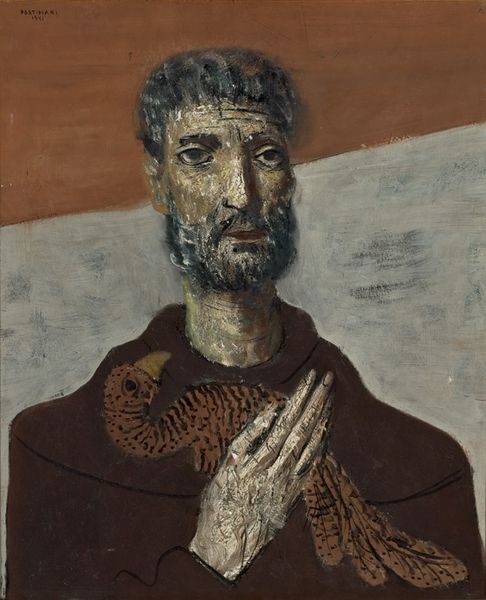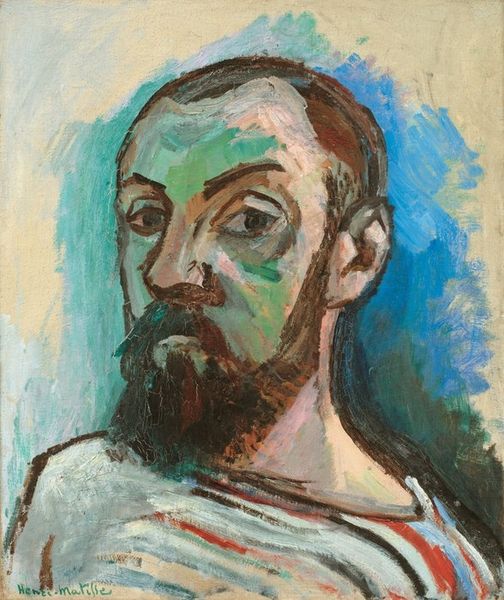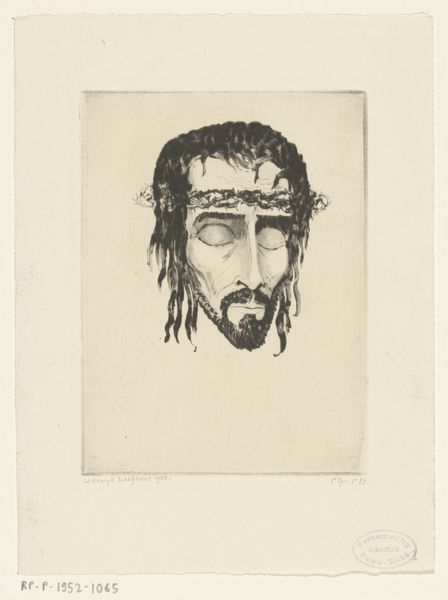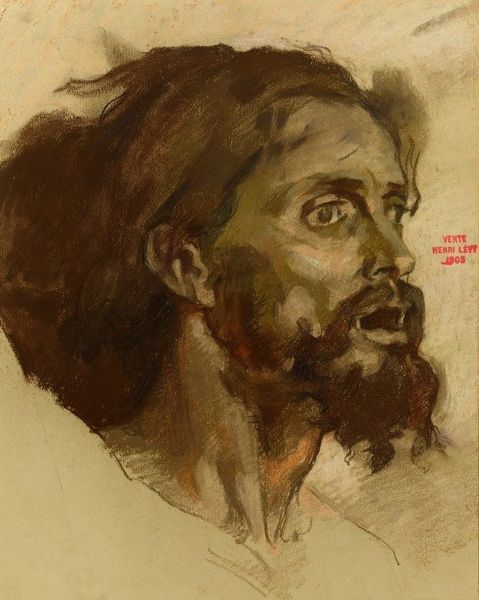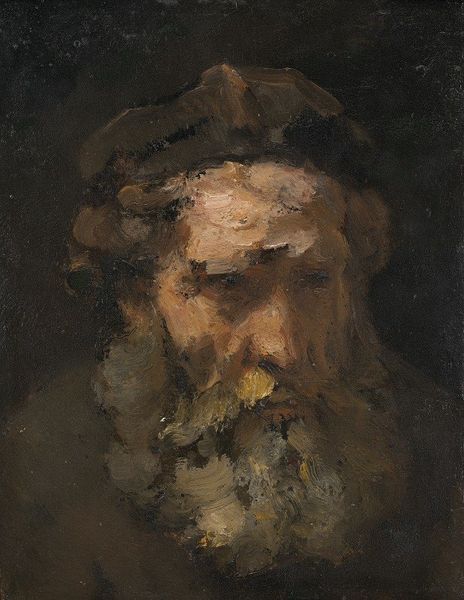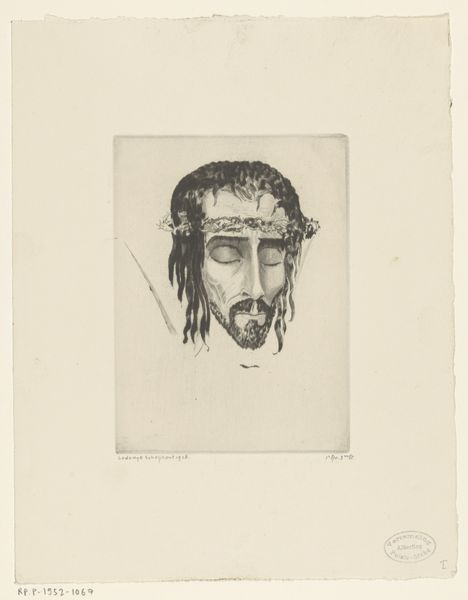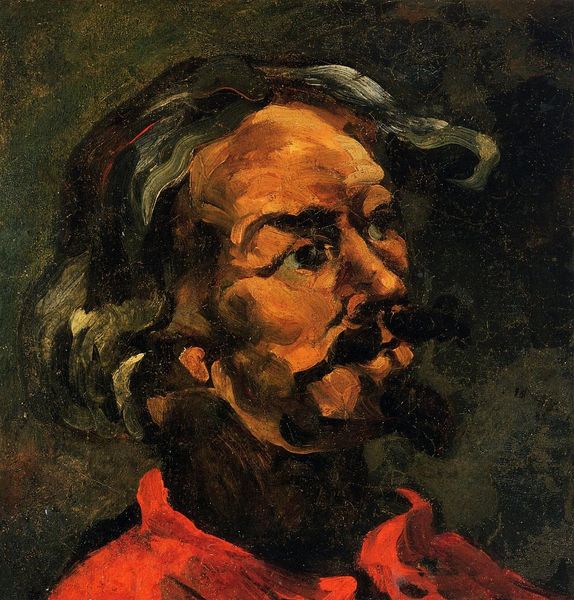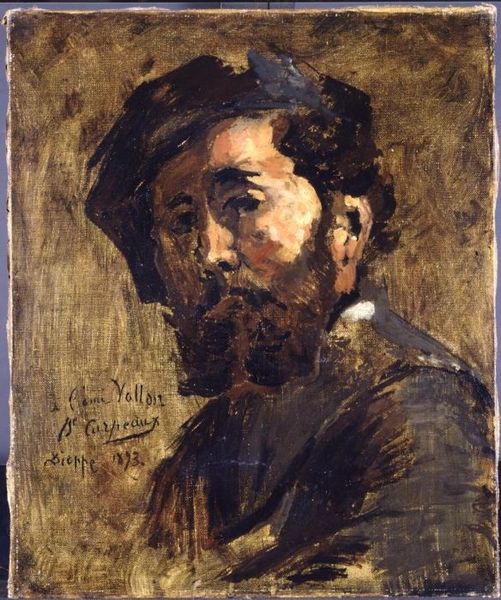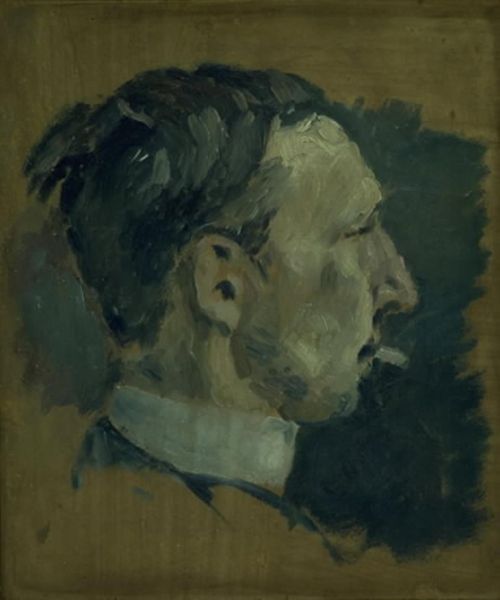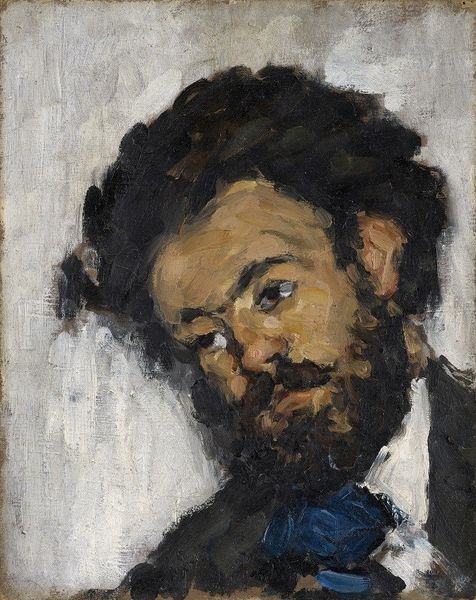
Copyright: Georgi Kovachev,Fair Use
Editor: So, this is "Radoi Ralin," an oil painting by Georgi Kovachev, from 1969. It's a very direct portrait. What I find immediately striking is the subject's gaze – it's averted, thoughtful, almost melancholic. What do you see in this piece? Curator: The averted gaze immediately pulls me in, too. It suggests an inner world, a retreat from direct engagement. The artist, Kovachev, presents Ralin not just as a face, but as a repository of lived experience, of stories and memories. The beard and hair, rendered in swirling strokes, also function as visual symbols of wisdom and perhaps even rebellion, common in depictions of intellectuals. What feelings does the colour palette evoke in you? Editor: It's quite muted – earthy browns and creams, which adds to the pensive mood, I think. It makes me wonder, how much did the social and political climate of 1969 Bulgaria influence this work? Curator: Exactly! Bulgaria in 1969 was under communist rule, and intellectual expression, while often supported, was also carefully monitored. The subdued colours might reflect a cautious approach, or a symbolic "veiling" of deeper emotions and thoughts. The choice of representing Ralin in this way, with this specific facial expression, can also serve as a commentary, as a cultural memory of intellectuals within oppressive environments, no? Editor: That's a perspective I hadn't considered. I was just focusing on the personal emotion. But I now see how this is cultural commentary, veiled perhaps, within a specific time. Curator: And isn't that the power of art? To hold within itself both the personal and the historical, the individual and the collective memory. Hopefully this offers new ways of looking at how identity is framed in visual portraiture! Editor: Definitely! I’ll look at portraits quite differently going forward. Thanks!
Comments
No comments
Be the first to comment and join the conversation on the ultimate creative platform.
